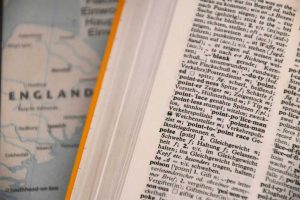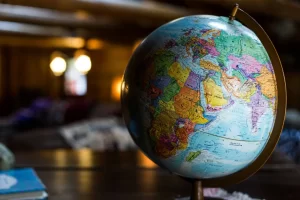The Importance of Medical Document Translation
In a diverse and multicultural world, the importance of medical document translation cannot be overstated. It plays a vital role in enhancing patient safety and facilitating communication in healthcare, particularly for patients who speak different languages.
Enhancing Patient Safety
One of the primary benefits of medical document translation is that it significantly enhances patient safety. Medical documents contain crucial information about a patient's health condition, medical history, and prescribed treatments. Therefore, these documents need to be translated with the highest level of accuracy and precision to avoid any misunderstanding or misinterpretation that could lead to severe medical errors or complications (Dynamic Language).
Errors in medical translations can lead to misdiagnosis, treatment errors, and potential harm to patients. As such, medical document translation requires a high level of accuracy and specialized knowledge due to the technical terminology and sensitive nature of medical information.
Facilitating Communication in Healthcare
In addition to enhancing patient safety, medical document translation also plays a crucial role in facilitating effective communication in healthcare. It enables healthcare professionals to effectively communicate with patients who speak different languages, ensuring that all patients receive appropriate and accurate medical care.
This is particularly essential in scenarios where healthcare professionals need to discuss complex medical conditions or procedures with patients. In such cases, accurate translation of medical documents can help patients understand their health situation better, enabling them to make informed decisions about their health.
In conclusion, medical document translation is not just about converting text from one language to another. It's about ensuring that every patient, regardless of their language, has access to safe, high-quality healthcare services. As such, it's crucial to rely on certified translation services to ensure the highest level of accuracy and quality in medical document translation.
Key Aspects of Medical Translation
Medical document translation is a complex process that requires not only linguistic skills but also a deep understanding of medical concepts, procedures, and cultural nuances. This ensures the accurate translation of medical information, which is crucial for patient safety. Here, we explore three key aspects of medical translation: language proficiency, medical knowledge and expertise, and understanding of cultural nuances.
Language Proficiency
Language proficiency is the cornerstone of any translation service, and this holds particularly true for medical document translation. Translators must have a strong command of both the source and target languages to accurately convey the meaning and intent of the medical documents. This requires not only fluency in the languages but also an understanding of the grammatical structures, idioms, and colloquialisms that may be present in the text.
High-level language skills are essential for ensuring the accuracy of the translation, as any mistranslation or misinterpretation could lead to serious consequences for patients. This is why it's important to enlist the services of a certified translator for sensitive tasks such as medical document translation.
Medical Knowledge and Expertise
In addition to language skills, medical document translation requires specialized knowledge and expertise in the field of medicine. Translators must be familiar with medical terminology, procedures, and regulations in both the source and target languages. This specialized knowledge is necessary for accurately translating a variety of documents such as medical records, patient reports, consent forms, and clinical trial documents.
Furthermore, translators must stay up-to-date with advancements in medical research, technology, and terminology to ensure the most accurate translation of medical documents. This requires continuous learning and professional development, highlighting the importance of choosing a translator or a medical translation service with solid medical expertise.
Understanding Cultural Nuances
Cultural understanding is another critical aspect of medical document translation. Cultural nuances can significantly impact the interpretation of medical information, so translators must be sensitive to these differences when translating documents.
For instance, medical practices and beliefs can vary greatly from one culture to another, and these differences must be taken into account to ensure the accurate translation of medical information. Moreover, some medical terms may not have direct equivalents in the target language, requiring the translator to find culturally appropriate phrases or explanations.
In conclusion, medical document translation is a highly specialized field that requires a unique blend of language proficiency, medical knowledge and expertise, and cultural understanding. By considering these key aspects, organizations and individuals can ensure the highest quality translations, ultimately contributing to improved patient safety and communication in healthcare.
Ensuring Quality in Medical Translation
Quality is of utmost importance when it comes to medical document translation. This complex task requires not only linguistic proficiency but also an understanding of medical terminology, procedures, and regulations in both the source and target languages. (Shoreline Translation)
Rigorous Training for Translators
Qualified medical translators undergo rigorous training to acquire the necessary skills and knowledge for this specialized field. They need to have a thorough understanding of medical concepts and terminology to provide accurate translations that meet the highest standards of quality and precision (Shoreline Translation). Continuous learning and development are essential for translators to stay updated with the latest medical advancements and translation techniques. You can learn more about the qualifications of a good translator on our page about certified translators.
Quality Assurance Processes
Quality assurance processes are crucial to ensure the accuracy and consistency of medical translations. These processes involve thorough reviews by a quality assurance team. At TW Languages, for example, they employ a rigorous quality control process that includes continuous training for translators and meticulous reviews to maintain the accuracy of medical translations while upholding patient privacy.
Use of Translation Technology
Translation technology, such as translation memory tools and machine translation with post-editing, can significantly improve efficiency and consistency in medical document translation (iTi Translates). These tools can help to maintain accuracy and quality by reducing the risk of human error and ensuring uniformity in the translation of specific medical terms or phrases. However, human expertise and review are still essential to capture the nuances and context of medical texts accurately.
In conclusion, ensuring quality in medical translation involves rigorous training for translators, comprehensive quality assurance processes, and the strategic use of translation technology. These elements, combined with a strong commitment to patient privacy and confidentiality, contribute to the provision of reliable and effective medical translation services.
Challenges in Medical Document Translation
Translating medical documents is a complex task that presents unique challenges. It requires a deep understanding of medical terminology in both the source and target languages, specialized knowledge, and familiarity with legal regulations. Let's explore these challenges in more detail.
Maintaining Patient Confidentiality
One of the key challenges in medical document translation is maintaining patient confidentiality. Medical documents often contain sensitive personal information, and it's essential to protect this data during the translation process. Translators need to follow strict privacy protocols and comply with legislation such as HIPAA (Health Insurance Portability and Accountability Act) in the U.S. to ensure patient information is not disclosed or misused. It emphasizes the importance of working with a reputable medical translation services provider that adheres to stringent confidentiality standards.
Navigating Complex Regulatory Requirements
Medical translations are subject to various regulations and standards set by healthcare authorities and regulatory bodies. Translators need to be familiar with these regulations and ensure that the translated documents are compliant. This can be particularly challenging when translating medical documents for use in different countries, as regulations can vary significantly. A certified translator with expertise in medical translation can help navigate these complex requirements and ensure that the translated documents meet all relevant guidelines.
Handling Specialized Medical Language
Medical document translation poses unique challenges due to the specialized terminology and complex medical concepts involved. Translators need to be proficient not only in multiple languages but also have medical experience to accurately translate these documents.
Different sectors within the medical field, such as hematology, oncology, and radiology, have their specific terminologies. Translation companies should have access to experts in various medical specialisms to ensure accurate translations (LinkedIn).
Furthermore, the language and level of detail will vary depending on whether the document is meant for doctors, nurses, or patients. Translators need to tailor the communication to the appropriate audience and consider factors like confidentiality and technical language.
To overcome these challenges, it is essential to work with professional translation agencies or translators with expertise in medical translation. Mistakes and inaccuracies in medical document translation can have serious consequences, including misdiagnosis, improper treatment, and potential harm to patients (iTi Translates). Therefore, ensuring accuracy, compliance, and confidentiality should be the top priority in medical document translation.
Role of Professional Medical Translators
Professional medical translators play a critical role in global healthcare communication. Their expertise in medical specializations, adherence to legal and ethical obligations, and contribution to global healthcare significantly impact the quality and effectiveness of medical document translation.
Expertise in Medical Specializations
Qualified medical translators undergo rigorous training and have a thorough understanding of medical concepts and terminology to provide accurate translations that meet the highest standards of quality and precision. Their proficiency in language coupled with their medical knowledge ensures that the translated documents are precise and clear.
In addition to language proficiency and medical knowledge, translators also need expertise in specific medical specializations. Different sectors within the medical field, such as hematology, oncology, and radiology, require specialized knowledge and terminology. Translation companies should have access to experts in various medical specialisms to ensure accurate translations.
For instance, a translator specializing in oncology would be the best fit for translating medical documents related to cancer treatments. This specialized knowledge is crucial for maintaining the integrity of the original document and ensuring that the translated text is accurate and comprehensible.
Adherence to Legal and Ethical Obligations
Professional medical translators also have a responsibility to adhere to legal and ethical obligations, particularly in regards to maintaining patient confidentiality. Translators and translation agencies should sign Non-Disclosure Agreements (NDAs) with their clients to ensure the confidentiality of the documents being translated.
Working with professional translators who have expertise in legal translation and are bound by professional ethics further ensures confidentiality (LinkedIn). Translators with relevant certifications and memberships in translation associations can provide an added level of assurance.
Contribution to Global Healthcare
Professional medical translators make a significant contribution to global healthcare. By ensuring accurate and precise translation of medical documents, they promote better understanding and communication between healthcare providers and patients from different linguistic backgrounds.
Their role becomes even more crucial in the context of global health crises where timely and accurate dissemination of medical information can save lives. Whether it's translating public health guidelines during a pandemic or providing medical translation services for clinical research, professional medical translators help bridge language barriers and facilitate global health efforts.
In conclusion, professional medical translators play a pivotal role in enhancing global healthcare communication. Their expertise in medical specializations, adherence to legal and ethical obligations, and contributions to global healthcare underscore the importance of their role in the medical field.
Protecting Privacy in Medical Translation
Protecting privacy is a critical aspect of medical document translation. It involves implementing stringent measures to ensure the confidentiality and security of sensitive patient information. These measures range from legal agreements and secure handling of documents to robust quality control mechanisms.
Use of Non-Disclosure Agreements
To protect the confidentiality of medical documents, translation agencies should sign Non-Disclosure Agreements (NDAs) with their clients. NDAs outline the responsibilities and obligations of the translator in maintaining confidentiality. This ensures that sensitive information contained in the documents remains private and secure (LinkedIn). You can learn more about this from our certified translation services.
Secure Transmission and Storage of Documents
Another crucial step in protecting privacy is the secure transmission and storage of documents. Legal documents should be shared through encrypted channels to prevent unauthorized access or interception. Password protection and secure file transfer protocols are employed to maintain confidentiality.
Furthermore, translation agencies should have secure storage systems in place to store translated documents. This includes measures such as password protection, firewalls, and access control, which prevent unauthorized access to the documents.
Quality Control and Confidentiality
It's also essential to work with professional translators who have expertise in medical translation and are bound by professional ethics to maintain confidentiality. Translators with relevant certifications and memberships in translation associations can provide an added level of assurance (LinkedIn).
Moreover, translation agencies should have strict quality assurance processes in place to ensure that confidentiality and privacy are maintained throughout the translation process. This includes internal reviews and audits to monitor and prevent any breaches (LinkedIn).
By following these best practices, translation service providers can help safeguard patient privacy, making them a reliable partner for medical translation services.
The Future of Medical Document Translation
The field of medical document translation continues to evolve, driven by growing demand, the need to serve diverse patient populations, and technology advancements.
Growing Demand for Medical Interpreters
The demand for medical interpreters is on the rise due to an increasingly diverse population and a recognized need for improved healthcare access for non-English speaking individuals. This trend signifies a greater need for medical translation services to bridge language barriers, ensuring that all patients receive appropriate and accurate medical care.
Impact on Diverse Patient Populations
Medical document translation plays a crucial role in facilitating communication between healthcare providers and patients who speak different languages. It allows healthcare providers to better serve diverse patient populations, including immigrant communities and international patients, by providing them with information and resources in their native languages.
By providing accurate and useful translated medical documents, translators contribute to the safety and well-being of patients. They ensure that critical information, diagnoses, medications, and advice are effectively communicated, supporting the goal of returning patients to good health.
The Role of Advanced Technology
The future of medical document translation also lies in the utilization of advanced technology. Translation memory tools and machine translation with post-editing can help improve efficiency and consistency in medical document translation, while still maintaining accuracy and quality. However, human expertise and review remain essential to ensure the nuances and context of medical texts are accurately conveyed.
Technological advancement also offers potential for integrations with electronic health record systems, telemedicine platforms, and other digital health tools. This can enable seamless translation workflows, ensuring timely and efficient access to translated documents.
The future of medical document translation is dynamic and promising, shaped by growing demand, diverse patient needs, and technological advancements. As the field evolves, the role of professional certified translators specializing in healthcare becomes even more critical in delivering high-quality, accurate, and culturally sensitive translations.






